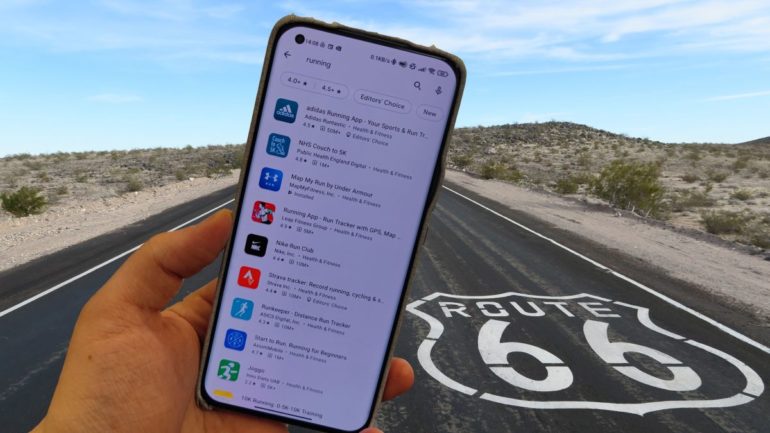Search ‘running’ in the App Store or Play Store and you’ll find hundreds of apps. There are apps for pairing devices, apps for logging your runs, apps for comparing your distances with others, even apps for gamifying your workouts.
Where am I?
Column number: 12
Date written: 12/08/21
Days in: 165
Current location: Afton, OK
Distance traveled: 649.36 miles
Distance left: 1628.64 miles
Current tracker: Polar Vantage M2
If you’re looking for a running app, then, you’re spoiled for choice. But no one will ever simply say to themselves “I want a running app.” An app for what, exactly? The possibilities are almost endless.
I’m in a bind. I need an app to help me retrain after an injury, but I don’t want a generalized running app, because I’ve already got too many of them, and I’ve tested loads in my quest to run the entirety of Route 66 in two years.
It’s impossible to know if there’s actually an app out there that fits my needs, because there are so many jack-of-all-trades platforms. It’s made me realize that there are far too many generalized running apps out there, and maybe not enough for specific tasks.
Running on empty
As detailed in my last running column, I’m recovering from a foot injury, but in less than five weeks I’ve also got a half marathon that I need to train up for – I’m going from zero to 13.1 (or 21.1 if you want to be all metric about it) in a month.
That’s a totally plausible goal: when I started writing my running columns at the beginning of the year, I ran my own half marathon without training for it just to prove to myself that I could. But it was tough going, and I turned in a pretty poor time compared to actual organized half marathons I’ve participated in.
For my upcoming attempt I decided to look for online training plans, and via a quick Google search I found a few options that promised to help me build up to the full distance in a month. But these seemed designed for people who hadn’t run much before, but who also had loads of time on their hands, and neither of those things is appropriate for me.
But while I was looking up at my computer for a training plan, my phone made a little ‘ping’ – it was some game begging me to play again after a whole 24 hours away. And that’s when I realized that my phone, and its apps, could be the driving force I need.
Runny business
What I was ideally looking for was a training app into which I could input my running details and training goal (half marathon, in this case), which would then tell me what kind of workout I’d need to do each day to hit that goal. Even more ideally, I’d then report my actual performance, and the app would adjust the predictions and plans accordingly.
Being a tech writer – and specifically a tech writer writing about running apps – I didn’t just download one or two apps, but filled a whole screen on my phone with a selection, ready to try out. However, not one of them provided what I was looking for.
Many of the apps let me record my height, weight and other personal details, but then just put me on some generic plan that I could’ve found online. Slightly worryingly, all of these random services now have my personal details – and I didn’t even use the apps for running.
There are plenty of paid apps out there, though what you actually get for your money in most cases wasn’t clear – and I’m too poor to afford some regular subscription, especially if I don’t know what I’m paying for.
After testing dozens of apps, I felt like I’d just seen the same platform in different skins – none had provided me what I was looking for.
That’s not to say there’s no such thing as an in-depth marathon-planning app; I just didn’t find it. And that’s the problem.
Too much of anything
Search ‘running’ in the App Store or Play Store and you’ll find hundreds of different apps. There are just too many running apps out there – and if you just want a simple way to log your exercises or track your progress, it’s impossible to know which one is right for you, or even what they all do.
And if that’s the case for me – a seasoned runner and tech journalist who has some idea what to look for – then a novice runner who just wants a virtual companion to help them learn how to run, will be in the deep end.
With far too many lookalike generic running apps, it feels like you’re drowning in options. And if, like me, you’re looking for something specific, it’s like looking for a needle in an app-store haystack.
So what’s the solution? Well in a perfect world we’d zap out lots of the filler options, but in due course we probably won’t need to. With tech and exercise devices getting smarter and smarter, it’s likely that all the tools and features I, or anyone else needs, will get introduced into the popular apps, or wearable tie-in apps.
Training modes are fairly smart already, though not quite enough for what I need. Before long though, I’m sure I’ll be able to program in the exact training schedule that I want. It’s just a shame that, until then, the running app situation is so confusing.




